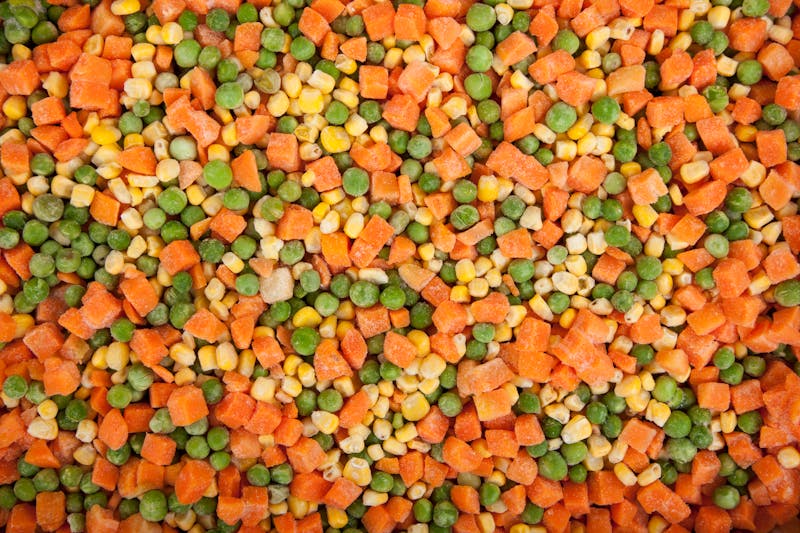Birdseye and the invention of Frozen Food

Imagine walking through the aisles of your local grocery store, filled with a variety of frozen foods that promise convenience and freshness. It's hard to picture a time when these options didn't exist. The world of frozen food owes much of its existence to one man: Clarence Birdseye. His innovative spirit and relentless pursuit of preserving food led to the birth of an industry that has transformed how we eat and live.
Clarence Birdseye's journey began in the early 20th century when he worked as a fur trader in the Arctic. Observing how the indigenous people preserved their fish by freezing them rapidly in the frigid temperatures, Birdseye saw an opportunity. He realized that quick freezing at extremely low temperatures could preserve the texture and flavor of food far better than traditional methods. This observation laid the foundation for his revolutionary idea.
Birdseye returned to the United States with a vision. He invested his time and resources into developing a method for quick-freezing food that could be replicated on a larger scale. By 1924, he had perfected his technique and founded the General Seafood Corporation. This marked the beginning of a new era in food preservation, making it possible for people everywhere to enjoy fresh-tasting meals without being bound by seasons or geography.
The Invention of Quick-Freeze Technology
Birdseye's quick-freeze technology was groundbreaking because it addressed the primary issue with existing freezing methods: ice crystals. Traditional freezing allowed large ice crystals to form, damaging cell structures in food and leading to mushy textures upon thawing. Birdseye's process involved freezing food at extremely low temperatures (-40°F) very quickly, preventing large ice crystals from forming and thus preserving the food's integrity.
In 1927, Birdseye patented his invention, known as the "Quick Freeze Machine." This device used two metal belts cooled by calcium chloride solution to freeze packaged foods swiftly. The success of this invention wasn't just in its technical brilliance but also in its practicality and scalability, enabling mass production of high-quality frozen foods.
His next challenge was convincing consumers and retailers to embrace this new concept. At first, frozen foods were met with skepticism; people were accustomed to canned goods or fresh produce. However, Birdseye's relentless marketing efforts and demonstrations showcasing the superior quality of his products eventually won over both supermarkets and households.
Birdseye's Impact on Modern Food Industry
The success of Clarence Birdseye's quick-freezing technology had far-reaching implications for the food industry. It revolutionized how food was stored, transported, and consumed. Thanks to his innovation, people gained access to a wider variety of foods year-round, regardless of seasonal limitations or geographical constraints.
Frozen foods also contributed significantly to reducing food waste. By preserving surplus produce through quick freezing, it became possible to store excess harvests for extended periods without spoilage. This advancement not only benefited consumers but also farmers and retailers who could now manage their inventory more efficiently.
Today, Birdseye's legacy is evident in every supermarket freezer aisle. Companies like Nestlé, Tyson Foods, and Conagra Brands have built entire product lines around frozen foods, offering everything from vegetables and fruits to ready-to-eat meals. The convenience factor has made these products indispensable in modern kitchens.
Table: Key Milestones in Frozen Food Development
| Year | Event |
|---|---|
| 1924 | Clarence Birdseye founds General Seafood Corporation |
| 1927 | Patent granted for Quick Freeze Machine |
| 1930 | First line of frozen foods introduced to retail markets |
| 1950s | Expansion of frozen food varieties including full meals |
| 2000s | Innovations in packaging and microwaveable options |
Birdseye's Legacy in Today's Businesses
The principles behind Birdseye's quick-freeze technology continue to influence modern businesses beyond just frozen foods. For example, companies like Blue Apron and HelloFresh utilize similar preservation techniques for their meal kits, ensuring that ingredients remain fresh during transportation and storage.
The success story of Clarence Birdseye also serves as inspiration for entrepreneurs across industries. His ability to identify a problem, develop a practical solution, and market it effectively is a blueprint followed by many successful startups today. Founders like Elon Musk with Tesla or Steve Jobs with Apple have echoed this approach—turning innovative ideas into mainstream products through persistence and strategic execution.
The Future of Frozen Foods
The frozen food industry continues to evolve with advancements in technology and changing consumer preferences. Innovations such as flash freezing and vacuum-sealed packaging are further enhancing quality and shelf life. Additionally, there's a growing trend towards healthier options, with companies introducing organic and non-GMO frozen products.
Sustainability is another focus area for modern frozen food companies. Reducing carbon footprints through eco-friendly packaging materials and optimizing supply chains are critical considerations as businesses strive to meet environmental goals while maintaining product quality.
The invention of frozen food by Clarence Birdseye has undeniably transformed our culinary landscape. What started as an observation during his time as a fur trader has grown into a global industry worth billions. His pioneering work not only brought convenience into our kitchens but also paved the way for future innovations in food preservation.
As we look forward, the principles established by Birdseye will continue to drive progress in the industry. Whether it's through new technologies or sustainable practices, his legacy lives on in every frozen meal enjoyed around the world today.